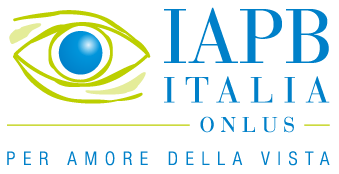What children see after birth and which examinations should be undertaken in the first three years of a child’s life.
No child is too young to be examined and doctors can gather a great quantity of information through an eye examination on a newborn. This scientific observation was the basis for the March 26 web talk “Come si sviluppa la vista nel neonato [Vision development in newborns]”, moderated by Tommaso Vesentini, journalist and science communicator. Prof. Filippo Curciani, scientific advisor at IAPB Italy, took part in the live event and answered the questions of mum bloggers Olga Zappalà, Laura Anzano, Angelica Montagner and Ottavia Vallese, advising parents on how to take care of their children’s vision development. In his opening remarks, Mr. Giuseppe Castronovo, President of IAPB Italy, underlined the agency’s efforts for the prevention of visual impairment in children, which also happens through vision rehabilitation programs at the National Low Vision Centre.
At birth, newborns move from a protected environment into the external world, new surroundings they will try to get to know in every detail. Vision is the main source of knowledge in humans: 80 percent of information from the outside is gathered through the eyes, which are therefore a critical tool for children to understand the world around them.
There are different vision development milestones in children, as well as many signs that may prompt doctors and parents to take action. Eye conditions can usually be corrected before the third year of a child’s life: after reaching this age, it’s difficult that full vision can be recovered. Let’s look at how vision develops in the first years of a child’s life.
How developed is the vision system of a child at birth?
“Eyes are fully formed from an anatomic point of view, but functionally they are like a blank slate, a computer which is equipped with a software but has no stored data. Eyes have to learn to see, and this is a complex art that must be mastered through continuous stimulation. Vision is fully formed around the third year of life, when it reaches complete functional maturity. It is a slow process that develops day by day. It is important that the visual apparatus develop through precise stimulation in the absence of any obstacle.”
What do newborns see at birth? Can they recognise faces?
“Their eyes are ready, but they need to be equipped with the indispensable tools to start using them. Newborns can see, but they don’t know what they see and they have to slowly learn to recognise what they observe. Only gradually will some images become familiar to them.”
When should my child have an eye examination? Can they be tested even though they can’t see very well yet?
“Children can be examined at any age and there are no problems regarding that. Through a full examination, we can detect potential eye conditions. It’s worth bearing in mind though that ocular refraction values may change over time: for example, hypermetropia is often present after birth but gradually decreases.
The crucial examination that helps exclude malformations, such as congenital cataract or other diseases, happens just after birth. In the past, blindness mainly developed from childhood due to the prevalence of infectious diseases. Today, prevention and improved hygiene have enormously reduced the number of blind children, but blinding diseases of genetic origin or those contracted during pregnancy are still dangerous.
For this reason, we insist on a full eye examination at birth, including the red reflex test, that pediatricians can also perform.
A full eye examination before the third year of a child’s life is crucial. If some symptoms are detected before then, it is better to bring the examination forward. The sooner, the better. The examination is needed to assess eye anatomy and function. In the past, people thought that children had to collaborate during the test, but this is not the case. Even if they are not cooperative, we can perform the examination fully.”
Sometimes my child’s pupils look as if they are moving, almost flickering. Is this normal?
“This rhythmic flickering of the eyes may occur when a child is staring at an object and it looks like their eyes are continuously moving. This is a neurological sign and it indicates that, before birth, the visual apparatus may have experienced some issue. Illnesses, such as albinism, may cause this rhythmic horizontal movement, which although rare, can be symptomatic of nystagmus.”
Can I use eye drops to soothe red eyes after a crying outburst?
“Eye drops are a topical drug that must be used with great caution. Do not take initiative with children: the less products you use on them, the better. Eye drops can cause a burning sensation and bring discomfort, and should only be administered to children if prescribed by a doctor. Today, artificial tears are frequently used and they are useful in adults, but in the absence of a specific prescription, they could end up making children frightened of eye examinations. The administration of dilating drops is always a hard moment for children and they must be prepared, because those drops always bring about a burning sensation.”
Watch the event “Come si sviluppa la vista nel neonato” on www.proteggilasuavista.it.



